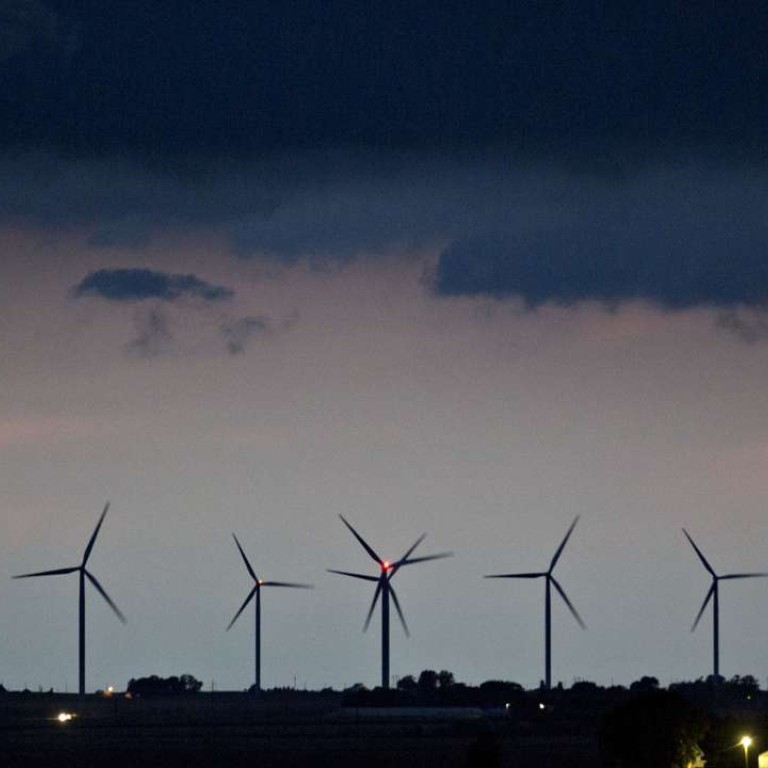
Clean energy firms feeling the heat as governments cut subsidies
The green-energy industry is starting to feel the impact of an efficiency drive sweeping Asia, with governments from China to Japan scaling back subsidies to constrain a boom in installations.
Investment in clean-power technologies in Asia slumped 41 per cent to US$70.1 billion in the first nine months of the year, according to Bloomberg New Energy Finance. That is the first decline in an industry that is barely a decade old. But the ability of those plants to produce electricity is on track to surge 13 per cent, the research group said.
Renewables have to be built efficiently and used more efficiently. Solar is becoming cheaper, and there is more efficient build
The findings underscore the concern of authorities about their ability to integrate a burgeoning number of wind and solar farms, which have strained the capacity of electricity grids.
A drop in investment “doesn’t mean that the industry is declining,” said Justin Wu, head of Asia and Pacific for BNEF in Hong Kong. “It is self-correcting. Renewables have to be built efficiently and used more efficiently. Solar is becoming cheaper, and there is more efficient build.”
In China, the world’s biggest market for the technology, subsidies were recalibrated at the end of last year because electricity demand stagnated and grid authorities struggled to keep up with the number of new wind and solar farms seeking connections.
Those factors reduced the need for new renewable energy capacity, giving the government the upper hand in negotiations over the price it will allow for power purchase agreements.
Japan has had a similar experience. The second-biggest market for solar in recent years has cut support for renewables to give utilities more time to integrate the variable flows of electricity and to take advantage of lower costs. The result was that worldwide, clean energy investment fell to its lowest in three years in the third quarter, according to BNEF data.
Project returns have fallen so low that “companies are seeking a footprint in emerging markets,“ said Wang Haisheng, executive general manager of the equity division at Ping An Securities Co.

Even with less investment, total installations of clean-power plants measured by their capacity are on track to surge this year by as much as 20 per cent in developing Asia, according to BNEF. That is partly because of a plunge in the cost of photovoltaic panels and wind turbines means developers can build more capacity for the same money.
Cheaper project costs are also allowing developers to work in more countries, especially Pakistan, the Philippines and Vietnam. Clean-energy capacity may rise by 24 gigawatts in Asia’s developing economies this year, more than the total capacity installed in Spain, according to BNEF.
“The rest of Asia is the next big market, and its potential is huge,” said Zhai Yongping, technical adviser at the Asian Development Bank’s energy sector group. Electricity demand in developing Asia “will certainly rise because of the huge population”.
In Southeast Asia, electricity consumption growth is forecast to average 3.6 per cent a year to 2040, according to BNEF. Indonesia plans to tender 30 geothermal concessions until 2018, Yunus Saefulhak, the geothermal director at Indonesia’s Energy and Mineral Resources Ministry, said in August. South Korea has a 42 trillion won (HK$285 billion) plan for clean energy by 2020.
Taiwan has approved a plan encourage renewables and halt use of its nuclear reactors in less than a decade, while Pakistan is seeking US$1 billion for clean-energy projects.
Even so, the amount of money going into the industry is falling after growing at double-digit rates in each of the past 11 years, according to BNEF. Investment in developing Asia fell about 11 per cent to US$12.5 billion in the first nine months of this year. The slowing investment “underscores the upcoming winter that manufacturers could face,“ said Wang of Ping An. “The industry needs to further reduce the cost of clean energy.”

